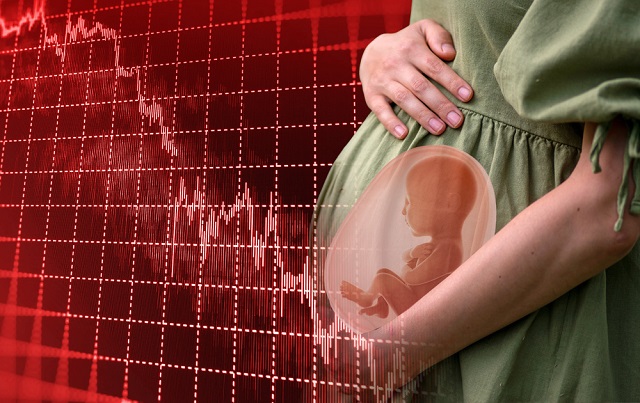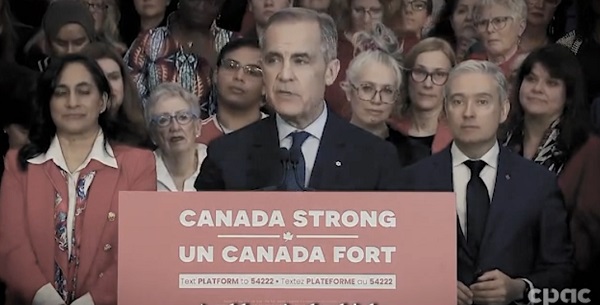International
U.S. birth rate hit record low last year, signaling surge in childlessness

From LifeSiteNews
As data analyst Stephen Shaw has documented in his film ‘Birthgap,’ declining birth rates in the U.S. and around the world are being driven by an ‘explosion’ in women choosing not to have children.
The U.S. birth rate hit a record low last year of 1.62 births per woman according to data from the Centers for Disease Control and Prevention (CDC), part of a worldwide trend of declining birth rates that have been shown to stem from rising childlessness.
The U.S. has had birth rates mostly below replacement level since 1972, according to United Nations (UN) data, with a minor brief respite from 2006 to 2007, when birth rates were just at replacement level. Birth rates hovered near replacement level from about 1989 to its recent peak of 2.11 births per woman in 2007. Since then, the birth rate has steadily declined.

The new CDC data shows that the birth rate for women ages 20 to 24 has seen a particularly steep decline of 47% since 2007. From 2022 to 2023 alone, the number of births for this age group dropped 4%.
As data analyst Stephen Shaw has documented in his film “Birthgap,” declining birth rates not just in the U.S. but around the world are being driven not by smaller family sizes but by an “explosion” in childlessness.
By comparing statistics on first-time mothers and the number of children they go on to have with national fertility rates, Shaw found that childlessness rates skyrocketed within only a few years in many countries.
For example, in Japan in 1974, one in 20 women were childless. By 1977, this ratio was one in four, and by 1990, it had reached one in three, a statistic that held in 2020. While Shaw doesn’t give specific numbers for most countries, he shares that most have become, like Italy and Japan, “childless nations,” where one-third or more people will become “childless for life.”
And according to the Pew Research Center, by 2010, “Nearly one-in-five American women end(ed) her childbearing years without having borne a child, compared with one-in-10 in the 1970s.” As of 2018, 41% of women between the ages of 25 and 44 were single and childless, and that number is projected to spike to a whopping 45% by 2030.
Just as remarkable as this trend is the finding in a Dutch meta-analysis, cited by author Jody Day in Shaw’s “Birthgap” film, and using data from the early 2000s, that only 10 percent of such women are childless “by choice,” and another 10 percent are childless due to “known” medical reasons, including infertility.
Institute for Family Studies (IFS) confirmed in December 2022 that the majority of childless women actually desire children. Thus, as Shaw summed up in his film, the main driver of childless women around the world now is failing to “find the right partner at the right time.”
Shaw highlighted what appear to be contributing factors: childbearing is delayed until a woman’s fertility window closes; women tend to want to settle with men at least as educated as they are, and everywhere, significantly more women are attending college than men; there are “too many options;” a number of young men are staying at home playing video games instead of pursuing women (or have given up on that).
Many speculate that increased pornography use and addiction is disincentivizing young men’s pursuit of women, and that overuse of technology is leading many young men and women to live isolated from each other.
The increasing secularization of society may also lead to growing numbers of childless women (and men) through a whole slew of hard-to-quantify factors, including by diminishing young people’s sense of purpose and happiness, and depriving them of character formation and a meaningful, effective way to select a mate.
Commentators such as Elon Musk have warned that if global birth rates continue to decline at their current projected rates, “human civilization will end.”
International
JD Vance was one of the last people to meet Pope Francis

From LifeSiteNews
By Matt Lamb
Vice President JD Vance was one of the last people to meet Pope Francis, as he saw him yesterday on Easter. Francis met with Vance, before he traveled to St. Peter’s Square to give a blessing to thousands gathered for Easter.
The pope died this morning at 7:35 this morning in Rome.
Vance, a Catholic convert, said his “heart goes out to the millions of Christians all over the world who loved him.”
“I was happy to see him yesterday, though he was obviously very ill,” Vance wrote on X. “But I’ll always remember him for the below homily he gave in the very early days of COVID. It was really quite beautiful.”
“May God rest his soul,” Vance wrote.
Vance linked to a March 27, 2020 homily titled “Extraordinary Moment of Prayer.”
Pope Francis said:
Embracing His cross means finding the courage to embrace all the hardships of the present time, abandoning for a moment our eagerness for power and possessions in order to make room for the creativity that only the Spirit is capable of inspiring. It means finding the courage to create spaces where everyone can recognize that they are called, and to allow new forms of hospitality, fraternity and solidarity. By his cross we have been saved in order to embrace hope and let it strengthen and sustain all measures and all possible avenues for helping us protect ourselves and others. Embracing the Lord in order to embrace hope: that is the strength of faith, which frees us from fear and gives us hope.
Vance was in Italy this week, as he also met with Prime Minister Giorgia Meloni. He also attended a Good Friday liturgy at the Vatican, as reported by the Associated Press. However, it remained unclear if the vice president would meet with the Pope, although he had a scheduled meeting with Cardinal Pietro Parolin.
In February, Pope Francis appeared to directly address Vance’s citation of “ordo amoris” where the vice president argued that the country must first take care of its own citizens before refugees and illegal immigrants.
As LifeSiteNews previously reported:
Earlier this year Pope Francis issued a blistering letter, appearing as a direct rebuff to both President Donald Trump’s policies to tackle illegal immigration and JD Vance’s comments about the “ordo amoris.”
Francis took direct aim at Vance about the “ordo amoris” – the Catholic teaching on a hierarchy or order of charity which starts with God, the family, and spreads eventually to the wider world – a principle defended and outlined by the Greek philosophers and Catholic theologians such as Sts. Augustine and Thomas Aquinas.
Repeatedly referring to the “infinite dignity” of man, Francis appeared to suggest that, based on this dignity, all people should be loved to the same degree and in the same way, thus defending his principle that the same dignity should be the principle behind having widely permissive immigration policies.
As extensively reported by LifeSiteNews, the pope’s health has been in decline for several months now since he was first admitted to the hospital in February for bronchitis, which turned out to actually be double pneumonia. A full obituary by LifeSiteNews’ Senior Vatican Correspondent Michael Haynes can be read here.
International
Pope Francis Dies on Day after Easter

By John Leake
Jorge Mario Bergoglio was many “firsts” in papal history.
This morning in Rome, Cardinal Kevin Farrell, the Vatican camerlengo (office for announcing Pope’s death) declared from the chapel of the Domus Santa Marta, where Francis lived:
At 7:35 this morning, the Bishop of Rome, Francis, returned to the house of the Father. His entire life was dedicated to the service of the Lord and of His Church.
Pope Francis was born Jorge Mario Bergoglio in Buenos Aires, Argentina, which made him the first pope from Latin America. He was also the first pope from the Jesuit order, which was banned in 1773 by Pope Clement XIV (and restored by Pope Pius VII in 1814).
Pope Francis was also the first to take the name of Francis of Assisi —the Italian mystic, poet and Catholic friar who founded the religious order of the Franciscans. Saint Francis has long been celebrated for his humility, simplicity, and his dedication to ministering to the poor. Pope Francis is said to have been especially inspired by Saint Francis.
The New York Times just published what strikes me as a competently written account of some key aspects of his papacy.
Francis was elected in March 2013 after the resignation of Benedict, the first pontiff to step down in nearly six centuries, amid turmoil and intrigue about secret lobbies and financial chicanery. The cardinal electors sought a reformer with a strong administrative hand, but few anticipated how Francis, then the 76-year-old archbishop of Buenos Aires, would blend reformist zeal and folksy charm in a push to clean house and transform the church.
“Buona sera,” good evening, Francis announced to the faithful in his first remarks as pope from the balcony overlooking St. Peter’s Square, breaking the ice with unaffected style. He joked about being from Argentina, noting that in fulfilling their duty to produce a pope, “it seems that my brother cardinals have gone almost to the ends of the Earth to get him.” …
Francis signaled his humble style from the outset. He paid his own bill at the Vatican hotel where he stayed during the conclave that elected him, rode about town in a modest Ford Focus, lived in a Vatican guesthouse rather than the ornate papal apartments and, in a Holy Week ritual performed at a youth prison, washed the feet of a young Muslim woman. Later, in his ailing years, he referred to his own frailty in demanding dignity for the aged.
His humility could be disarming. When asked about a priest who was said to be gay, he responded, “Who am I to judge?”
“Who am I to judge?” This statement seemed to recall Jesus’s statement to the Pharisees when they brought before him a woman condemned to be stoned for adultery. When they asked him if she should be stoned in accordance with the Law of Moses, he replied, “If any one of you is without sin, let him throw the first stone.”
Setting aside Paul’s explicit condemnation of homosexuality in Romans 1:26-27, the trouble with Francis’s statement is, it seems to me, twofold. First is the fact that Roman Catholic priests take a vow of celibacy—that is, they explicitly renounce sexuality.
Secondly, the Pope’s statement was remarkably tone-deaf to scandals that have rocked the Catholic church in recent decades involving gay priests who have abused minors in their congregations.
In 2018, Francis initially ignored Chilean abuse victims when he appointed Juan Barros Madrid to head the diocese of Osorno in Chile. Barros had been mentored by a notorious abuser named Father Fernando Karadima.
I mention the controversial matter of sexuality not in an attempt to adjudicate it, but to point out the broader controversy of Francis’s papacy—namely, his conspicuous embrace of many elements in the globalist agenda, including his advocacy of mass illegal immigration and what may be characterized as the Climate Change Cult.
In 2016, Francis seemed to throw his prestige behind the globalist propaganda campaign to prevent Donald Trump from being elected president. On February 18, 2016, he stated:
A person who thinks only about building walls, wherever they may be, and not building bridges, is not Christian. This is not in the Gospel.
Seeing this reminded me of the walls around Vatican City. Pope Leo IV commissioned their construction in 846 in response to Saracen attacks that caused significant damage to the St. Peter’s Basilica.
We believe the most disturbing gesture of his papacy was Vatican City’s issuance of a 20 Euro silver coin in 2022. As the Numista catalogue describes it:
The coin depicts a doctor, a nurse and a young person who is ready to receive the vaccine. The Holy Father has repeatedly stressed the importance of vaccination, recalling that healthcare is “a moral obligation”, and it is important to “continue efforts to immunize even the poorest peoples.
Note that the formulation “a young person who is ready to receive the vaccine” is identical to the formulation for a communicant “who is ready to receive the host”—in Italian “pronto a ricevere l’Eucaristia.”
The obverse of the coin bears the name Franciscus, the year 2022 (“Anno MMXXII”) and the Coat of Arms of Pope Francis.
I have no doubt that Francis performed many acts of Christian love and charity during his long life, and I hope he will rest in peace.
-

 2025 Federal Election2 days ago
2025 Federal Election2 days agoCarney’s Fiscal Fantasy: When the Economist Becomes More Dangerous Than the Drama Teacher
-

 2025 Federal Election2 days ago
2025 Federal Election2 days agoCampaign 2025 : The Liberal Costed Platform – Taxpayer Funded Fiction
-

 International15 hours ago
International15 hours agoPope Francis has died aged 88
-

 2025 Federal Election2 days ago
2025 Federal Election2 days agoA Perfect Storm of Corruption, Foreign Interference, and National Security Failures
-

 Business15 hours ago
Business15 hours agoCanada Urgently Needs A Watchdog For Government Waste
-

 Energy15 hours ago
Energy15 hours agoIndigenous-led Projects Hold Key To Canada’s Energy Future
-

 2025 Federal Election14 hours ago
2025 Federal Election14 hours agoCarney’s budget means more debt than Trudeau’s
-

 International11 hours ago
International11 hours agoPope Francis Dies on Day after Easter











